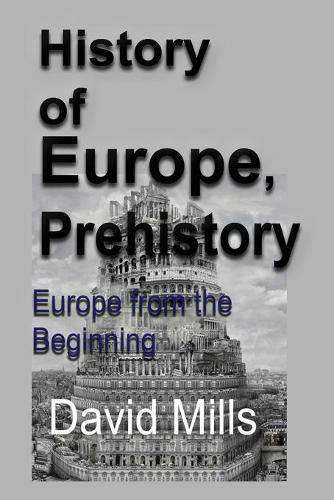Readings Newsletter
Become a Readings Member to make your shopping experience even easier.
Sign in or sign up for free!
You’re not far away from qualifying for FREE standard shipping within Australia
You’ve qualified for FREE standard shipping within Australia
The cart is loading…






This title is printed to order. This book may have been self-published. If so, we cannot guarantee the quality of the content. In the main most books will have gone through the editing process however some may not. We therefore suggest that you be aware of this before ordering this book. If in doubt check either the author or publisher’s details as we are unable to accept any returns unless they are faulty. Please contact us if you have any questions.
History of Europe, Prehistory. Europe from the Europe from the Beginning. The period of European history extending from about 500 to 1400-1500 CE is traditionally known as the Middle Ages. The term was first used by 15th-century scholars to designate the period between their own time and the fall of the Western Roman Empire. The period is often considered to have its own internal divisions: either early and late or early, central or high, and late. Although once regarded as a time of uninterrupted ignorance, superstition, and social oppression, the Middle Ages are now understood as a dynamic period during which the idea of Europe as a distinct cultural unit emerged. During late antiquity and the early Middle Ages, political, social, economic, and cultural structures were profoundly reorganized, as Roman imperial traditions gave way to those of the Germanic peoples who established kingdoms in the former Western Empire. New forms of political leadership were introduced, the population of Europe was gradually Christianized, and monasticism was established as the ideal form of religious life. These developments reached their mature form in the 9th century during the reign of Charlemagne and other rulers of the Carolingian dynasty, who oversaw a broad cultural revival known as the Carolingian renaissance. In the central, or high, Middle Ages, even more dramatic growth occurred. The period was marked by economic and territorial expansion, demographic and urban growth, the emergence of national identity, and the restructuring of secular and ecclesiastical institutions. It was the era of the Crusades, Gothic art and architecture, the papal monarchy, the birth of the university, the recovery of ancient Greek thought, and the soaring intellectual achievements of St. Thomas Aquinas (c. 1224-74).
$9.00 standard shipping within Australia
FREE standard shipping within Australia for orders over $100.00
Express & International shipping calculated at checkout
This title is printed to order. This book may have been self-published. If so, we cannot guarantee the quality of the content. In the main most books will have gone through the editing process however some may not. We therefore suggest that you be aware of this before ordering this book. If in doubt check either the author or publisher’s details as we are unable to accept any returns unless they are faulty. Please contact us if you have any questions.
History of Europe, Prehistory. Europe from the Europe from the Beginning. The period of European history extending from about 500 to 1400-1500 CE is traditionally known as the Middle Ages. The term was first used by 15th-century scholars to designate the period between their own time and the fall of the Western Roman Empire. The period is often considered to have its own internal divisions: either early and late or early, central or high, and late. Although once regarded as a time of uninterrupted ignorance, superstition, and social oppression, the Middle Ages are now understood as a dynamic period during which the idea of Europe as a distinct cultural unit emerged. During late antiquity and the early Middle Ages, political, social, economic, and cultural structures were profoundly reorganized, as Roman imperial traditions gave way to those of the Germanic peoples who established kingdoms in the former Western Empire. New forms of political leadership were introduced, the population of Europe was gradually Christianized, and monasticism was established as the ideal form of religious life. These developments reached their mature form in the 9th century during the reign of Charlemagne and other rulers of the Carolingian dynasty, who oversaw a broad cultural revival known as the Carolingian renaissance. In the central, or high, Middle Ages, even more dramatic growth occurred. The period was marked by economic and territorial expansion, demographic and urban growth, the emergence of national identity, and the restructuring of secular and ecclesiastical institutions. It was the era of the Crusades, Gothic art and architecture, the papal monarchy, the birth of the university, the recovery of ancient Greek thought, and the soaring intellectual achievements of St. Thomas Aquinas (c. 1224-74).